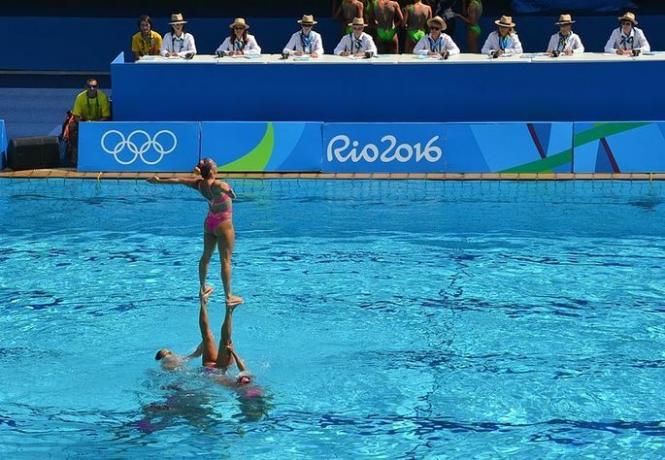Swimming is a physical activity based on the human ability to move around in water (swim). There are reports and evidence of the practice of swimming for thousands of years.
As a sport, swimming has appeared in competitions since the mid-19th century. It has also been present since the first Olympiad of the modern era in 1896, having evolved over time.
Swimming is one of the most popular sports in the world. In addition to physical conditioning, swimming brings several health benefits, having fans of all ages.
swimming history
Swimming has been practiced since many years before Christ, this is revealed by cave paintings and reports that trace an ancient relationship between humans and the activity.
The ability to swim enabled advances in issues related to human survival and development. It made it possible to overcome obstacles (rivers and lakes), acquire food (fishing) or even avoid drowning (floods or falls into rivers).
In ancient Greece, swimming took on its relationship to the health and fitness of warriors and athletes. In the Roman Empire, swimming was part of the education system and the first swimming pools were built.
During the Middle Ages, activities related to the body were criticized by the Church and swimming lost strength. With the Renaissance and the anthropocentric turn, swimming was once again practiced.
In 1538, the German author Nicholas Wymman writes the first book on the subject, entitled The swimmer or the art of swimming, a festive dialogue that is fun to read.
The first organized swimming competitions took place in London in 1837. In 1874, the first swimming rulebook is written.
In 1896, at the first Olympic Games of the modern era, in Athens, swimming was one of the nine sports disputed. The first Olympic swimming champion was Hungarian Alfréd Hajós.
Since then, swimming has evolved, swimming styles have emerged:
- Crawl - alternate strokes and vertical movement, also alternated;
- Back - Alternating arm and leg movements as in crawl, but with his back to the bottom of the pool;
- Chest - in the prone position, the athlete projects the body out of the pool and performs a movement of arms and legs together,
- butterfly (dolphin) - Wave leg movement like breaststroke, but with simultaneous arm movement, projected out of the pool.

New sports based on swimming also emerged:
- Water polo;
- Synchronized swimming;
- Diving;
- Dive.

The Health Benefits of Swimming
Swimming is understood by health experts as one of the most complete and beneficial activities for health.
In addition to moving various muscles of the torso, upper and lower limbs. Swimming has a low level of impact compared to other activities, considerably reducing the risk of injury.
Due to its relationship with water, it is very suitable for people with problems related to the cardiorespiratory system. It increases lung capacity, regulates the heartbeat and blood pressure of its practitioners.
Also, it is recommended for people who want to lose weight. The activity has a high energy expenditure, reaching more than 700 calories per hour of swimming.
Some studies also point to the relationship between swimming and the reduction of anxiety and stress.
Interested? Read too:
- Types of sport: invasion, brand, precision, combat, net and wall
- Olympics (Olympic Games)
- Olympic torch
- The History of Basketball
- Volleyball Fundamentals

